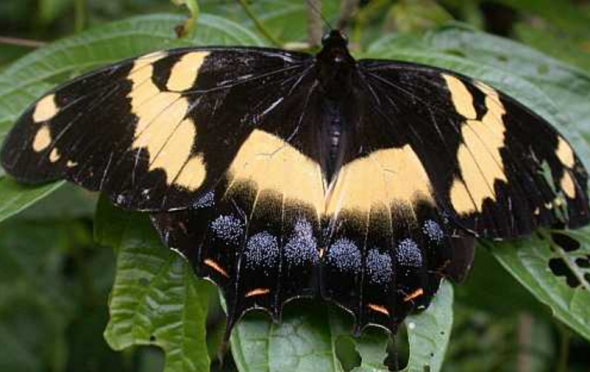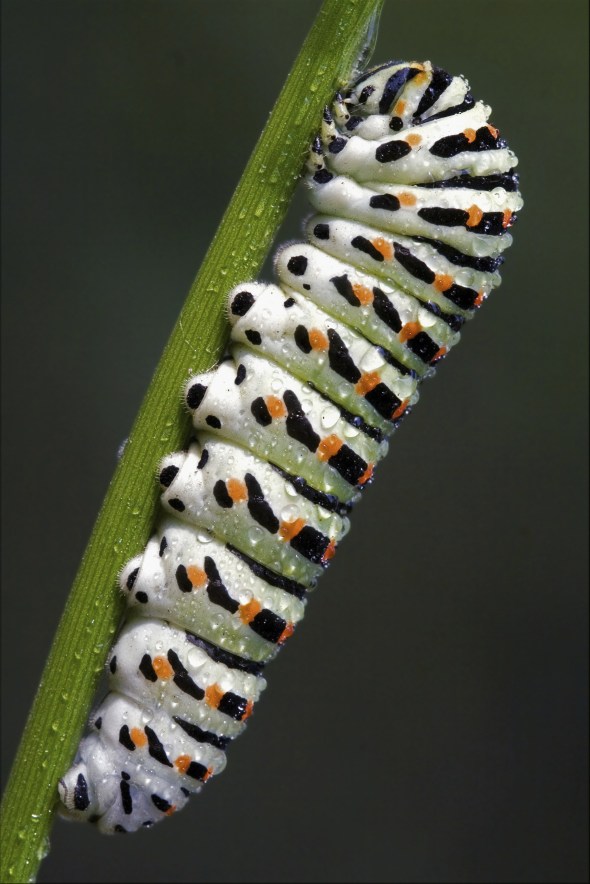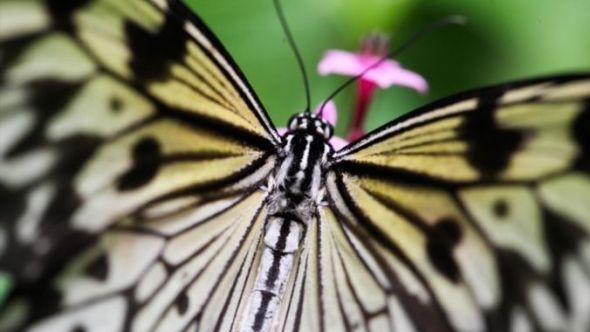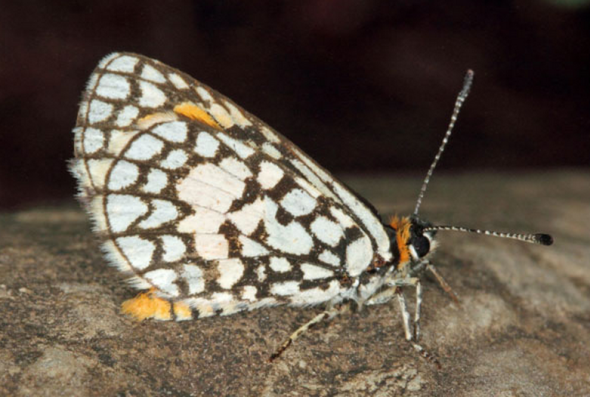Endangered Species Monday: Papilio homerus |Extinction Imminent.
Endangered Species Monday: Papilio homerus
This Mondays (Endangered Species Post) E.S.P, I document again on this stunning species of swallowtail butterfly. I last documented on this amazing species of butterfly two years back, unfortunately conservation actions that were ongoing back then still don’t seem to really be improving the current status of the largest swallow tail butterfly in the Western Hemisphere. Image credited to Dr Matthew S. Lehnert.
Despite the species nearing (complete extinction) within the wild, with a possible extinction likely to occur soon, biologists and conservationists are doing all they can to improve the current status of this beautiful insect, we can only hope for the best, or that the Jamaican Government increases further protection for the species, thus earmarking funding for conservation teams on the ground to preserve our largest Western Hemisphere species of swallowtail.
Endemic to Jamaica, the species was first discovered by Professor Johan Christian Fabricius (7 January 1745 – 3 March 1808) who was a Danish zoologist, specializing in “Insecta”, which at that time included all arthropods: insects, arachnids, crustaceans and others. He was a student of Professor Carl von Linnaeus, and is considered one of the most important entomologists of the 18th century, having named nearly 10,000 species of animals, and established the basis for the modern insect classification.
Professor Johan Christian Fabricius first identified and documented on P. homerus back in 1793. The common name for this swallowtail butterfly is known as the Homerus Swallowtail, which is listed as [endangered]. Back in 1983 the species was first listed as [vulnerable]. Then from 1985-1994 the species was re-listed as [endangered]. Evidence shows from 2007 we almost lost the species, of which conservation press and media pleaded with the public for help, which did in a way increase awareness. Sadly we need more awareness on and about this butterfly.
The specie hosts a wingspan of some fifteen centimeters, the Jamaican swallowtail is said to be the second largest swallowtail of its kind on the planet, with the African swallowtail alleged to be the largest. The species can only be located within the forests of Jamaica, of which habitat loss remains the largest yet significant threat associated with this species of swallowtail butterfly, butterfly collecting is alleged to be the second largest threat. Parasitic wasps also pose a large threat to the P. homerus too.
Back in the 1930’s P. homerus was considered to be somewhat common throughout Jamaica, however, regrettably the species can now only be located within the Blue and John Crow Mountains in eastern Jamaica. Population count is [estimated to be no fewer than fifty individuals], which theoretically makes this super stunning butterfly one of the planets most threatened species of insects.
P. homerus is included on the Convention of International Trade in Endangered Species wild flora and fauna (Cites), of which (all domestic and international trade of this species is strictly illegal). Collection for display and trade is illegal, and finally destruction of the swallowtail butterflies habitat is furthermore strictly ‘forbidden’.
It has been suggested that the species could/may ‘benefit from captive breeding’, more data on this subject can be located hereto http://www.troplep.org/TLR/1-2/pdf005.pdf The caterpillars feed exclusively on Hernandia jamaicensis and H. catalpifolia; both of which also are endemic to Jamaica.
The Giant is a peaceful lover of a quiet habitat and is normally found in areas that remain undisturbed and unsettled for the most part, although due to destruction of its habitat can rarely be found at some cultivated edges of the forests on the island. P. homerus primary and favorite residence is usually the wet limestone and lower montane rain forests, however, it is now isolated to only 2 known locations on the island of Jamaica. The reproduction habits are not well known but like most of its fluttering cousins, it feeds on leaves and flowers where it also breeds and lays eggs that develop on the host plants.
P. homerus future remains critical, and its quite likely that we’re going to see yet another extinction occur sometime very soon. As much as I hate to say this, I do honesty believe that a complete wild extinction may occur in no fewer than 1-2 years (if that). However I believe based on the current populations, data, and habitat destruction, that extinction will occur sooner than that. I am not aware (as explained) of any captive breeding programmes, which if such projects are not undertaken now, we’ll see the species gone for good in under a year.
Image: P. homerus caterpillar.
Thank you for reading, and please share this article to create more awareness relating to the Jamaican swallowtail, and lets hold our breath and pray to almighty God that somewhere out there, wherever God may be, a miracle may occur.
Dr Jose C. Depre
Follow me on Twitter here: https://twitter.com/josedepre11
Follow our main Facebook page here: https://www.facebook.com/InternationalAnimalRescueFoundationAfrica/
International Animal Rescue Foundation and Environmental News & Media are looking for keen, enthusiastic, environmental and animal lovers to write alongside us. We do not pick sides, and show both sides to every-story. We like to take a more middle stance, rather than a one-sided stance. If you would like to spare an hour of your time, per week, voluntarily writing for us, or your own environmental/animal welfare related issue please contact us via the contact box below.
Please note that we have since moved our main communications website to a new and more professional server that will be hosting everything from real life news, real time projects, world stories, environmental and animal rescues and much more. International Animal Rescue Foundation is a 100% self funded environmental company. While we don’t rely on donations, you can make a donation to us via our main Anti Pet & Bush Meat Coalition organisation page.
Have a nice day.
Endangered Species Monday: Alaena margaritacea
Endangered Species Monday: Alaena margaritacea
This Mondays (ESP) Endangered Species Watch Post we take a brief glance at South Africa’s most endangered species of butterfly. Generically identified as Alaena margaritacea the species was primarily located by Dr Harry Eltringham FRS (18 May 1873, South Shields - 26 November 1941, from Stroud) whom was an English histologist and entomologist who specialized in Lepidoptera. (Image: unknown photographer)
Dr Eltringham had been awarded a Master of Science (Cantab and Oxon) and a Doctor of Science (Oxon). He worked at the Hope Department of Entomology. He wrote Histological and Illustrative Methods for Entomologists OCLC 03655743, The Senses of Insects, London, Methuen (1933) and on Lepidoptera Nymphalidae: Subfamily Acraeinae. Lepidopterorum Catalogus 11:1-65 with Karl Jordan (1913) and On specific and mimetic relationships in the genus Heliconius.
Commonly known as the Wolkberg Zulu butterfly and identified back in 1929 the species stands within ‘threatened’ status of which has qualified for vulnerable listing. Endemic to a wee small town of South Africa the butterfly is from the family Lycaenidae which is the (second largest family of butterflies on the planet), hosting some 5,000 species and, constitutes 30% of the butterfly species on Planet Earth.
A. margaritacea is known to inhabit grassy slopes adjoining afromontane forest in the Haenertsburg area of the Limpopo Province near the Wolkberg. Populations trends are currently not known however we do know that flora alien (non-native botanical specimens) are placing the only two known colonies of Wolkberg Zulu butterflies within that area in [extreme danger], back in 2013-2014 a second colony was located to the joy of many.
To give you a clearer image of just how threatened the species is (any such habitat disturbance within their known range could see extinction occur within days rather than months or years).
However its not all doom and gloom yet. There is hope, even within a country that’s habitat is slowly being destroyed by agriculture, aquaculture and urbanization. Three years ago the species was believed to have gone extinct. However an intensive search was mounted by members of the Lepidopterists’ Society of Africa.
Despite being identified back in 1929 the species has only ever been known to occur in one single location: a small town in northern South Africa in Polokwane within the town of Haenertsberg. The wingspan is 24–27 mm for males and 28–30 mm for females. Adults are on wing from late December to early January. There is one generation per year. Lepidopterists’ Society of Africa spokesperson Naturalist Andre Coetzer stated that as yet none has been able to locate a third colony (2014).
The species has a habit of settling very frequently and for very long periods … which makes searching for the butterfly a tedious, challenging task involving long treks over rocky terrain while combing and scrutinizing the grass and undergrowth. And there’s another problem: the Wolkberg Zulu has an extremely short flight period (the ‘winged’ adult part of its life cycle) – just three weeks in December and early January that also happens to fall right in the middle of the rainy season. All of this easily explains why no one has found another colony of this elusive and endangered butterfly in the last 80 years. Until now… Please read more here to learn more on the butterfly. For fuether information please contact the organisation directly - click here
A typical liquid diet consists of nectar from flowers but also eat tree sap, dung, pollen, or rotting fruit. They are attracted to sodium found in salt and sweat too.
The word Lepidoptera is derived from the Latin words “lepido” meaning scale, and “ptera” meaning wings. Lepidoptera literally means scale wings, referring to the minute scale-like structures on the wings of both butterflies and moths. We are unsure as to how many Wolkberg Zulu Butterflies actually live within the two colonies, there could be anything from 100-200 (random guess). Which is why we please ask all our readers to make a donation to the Lepidopterists Society of Africa to secure more projects.
Image: Wolkberg Zulu butterfly
For now we remain skeptical and whether there will be more colonies located. We are praying for more colonies to be located. The Department of Environmental Affairs must do more to protect their lands from invasive botanical species to ensure future survival of all flora and fauna. Not forgetting establishing a funding program, protected and manned area to secure their South Africa’s critically endangered butterfly. Failing this we’ll lose South Africa’s most rarest butterfly known to humankind.
Threats
The only known threat to be placing the species in direct danger are that of alien botanical species. Habitat destruction is not known to be problematic within the region although agriculture and human disturbance could very well become a problem. For more information on alien invasive species please see click here for further information.
Unfortunately folks we do not have a video to show of this amazing video but hope one is made available soon. Video footage of this amazing yet so very rare butterfly would be wonderful to view. Please don’t forget to check out the links above and, donate if you can to the group Lepidopterists’ Society of Africa.
Thank you for reading.
Dr Jose C. Depre.
Chief Environmental and Botanical Scientist.







